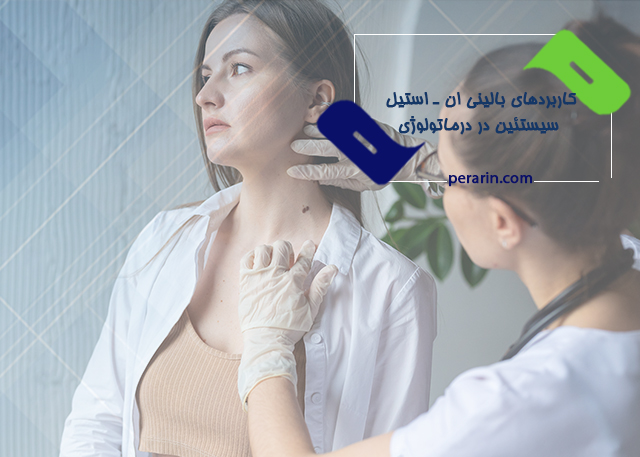N-acetylcysteine (NAC) is a metabolite of cysteine and a specific antidote for acetaminophen toxicity. In fact, this drug is approved by the FDA only for treating acetaminophen poisoning, although it is commonly used in internal medicine to treat idiopathic pulmonary fibrosis. NAC is traditionally used as an expectorant (mucolytic). It also has antimicrobial effects and vasodilatory properties. Additionally, this drug is used to prevent kidney damage during radiographic procedures with contrast agents, as an adjunct in eradicating Helicobacter pylori, to prevent hearing loss caused by gentamicin in dialysis patients, and as a dietary supplement. Given its various pharmacological effects and relative safety, there has been increasing interest in the use of NAC for various purposes in recent years. This article will review the potential applications of NAC in dermatology.
Pharmacology The usual dose of NAC is 1200 to 2400 mg per day. The pharmacokinetic parameters of NAC are not well defined. The plasma concentration of NAC varies widely among individuals, and since this substance is also synthesized endogenously in the body, pharmacokinetic calculations become more challenging. In studies conducted, no severe side effects of NAC have been reported. Even high doses of NAC have been used safely for up to one year in patients with pulmonary fibrosis. However, like any other antioxidant, the use of NAC may be associated with certain risks. In most clinical studies, side effects of NAC were no different from those of a placebo.
Side Effects of NAC Nausea, vomiting, diarrhea, bloating, headache, itching, and increased blood pressure are some of the side effects reported with the use of NAC, although they are rare. NAC can enhance the effects of nitroglycerin and related medications, which may lead to a drop in blood pressure in patients using these drugs.
Mechanism of Action Glutathione is one of the body’s primary antioxidants. It detoxifies various harmful substances, including xenobiotics, peroxide compounds, and other free radical-generating molecules, thus playing a crucial role in cellular protection. During oxidative stress, glutathione levels decrease. NAC helps replenish this deficiency, acting as an antioxidant by increasing glutathione levels. Since reactive oxygen species are involved in a wide range of diseases, NAC is expected to have therapeutic applications across various conditions.
Therapeutic Uses of NAC As mentioned, NAC is converted into cysteine in the body, which is a substrate for the antiporter glutamate-cysteine. This results in the reverse exchange of glutamate into the extracellular space, reducing glutamate release from synapses and modulating compulsive behaviors. Moreover, NAC facilitates nitric oxide production, leading to vasodilation, which provides various therapeutic applications.
Dermatological Uses of NAC
-
Prevention of Malignant Melanoma: Melanoma is an aggressive cancer with a poor prognosis. Despite ongoing efforts to control it, its incidence continues to rise. The most significant environmental factor in the development of melanoma is ultraviolet (UV) radiation, which increases the production of reactive oxygen species (ROS) and leads to oxidative DNA damage. These free radicals further contribute to cellular damage by depleting intracellular reducing agents like glutathione. Melanocytes are especially sensitive to oxidative stress. Therefore, reducing oxidative stress caused by UV radiation could serve as a preventive measure.
In a study by Goodson et al., administering NAC before UV exposure in patients’ moles prevented a decrease in glutathione levels in half of the patients. Thus, NAC could safely modulate UV-induced oxidative stress in moles, reducing the long-term risk of malignant melanoma.
-
Treatment of Toxic Epidermal Necrolysis (TEN): TEN is a life-threatening drug reaction that leads to widespread damage of the epithelial and epidermal tissues. While the pathophysiology of this condition is not fully understood, keratinocytes are considered key initiators of the process. The damage caused by TNF-α and oxidative stress in keratinocytes may result in a combination of apoptosis and necrosis. Therefore, a combination of anti-apoptotic/anti-necrotic drugs such as TNF-α antibodies and NAC could be used to target different stages of keratinocyte dysfunction.
The first report of NAC’s efficacy in treating TEN was published in 1994 by Redondo, where intravenous NAC combined with pentoxifylline was successfully used as a treatment.
Overall, NAC may play a role in improving severe drug reactions by:
- Increasing intracellular cysteine and interfering with oxidative mediators,
- Inhibiting TNF-α and interleukin-1 production,
- Suppressing CLAAg (cutaneous lymphocyte-associated antigen) expression.
Another study by Sabri and colleagues investigated the protective effects of NAC, oxotiazolidine carboxylate (OTC), acetaminophen, or their combination on sulfur mustard-induced cytotoxicity in human skin fibroblast cell lines. The results showed that NAC alone enhanced cell viability, increased glutathione levels, and increased catalase activity.
-
Treatment of Trichotillomania: Trichotillomania is a compulsive disorder. Although it has been described for over two centuries, its pathophysiology is still not fully understood. Despite two decades of research on this condition, no standard FDA-approved treatment exists. A meta-analysis revealed that clomipramine had only moderate efficacy compared to a placebo for treating this disorder.
One factor involved in the pathogenesis of obsessive-compulsive disorders is dysfunction in glutamatergic activity. It appears that disruption of the glutamatergic pathway plays a role in the pathogenesis of trichotillomania. In a double-blind study involving 50 patients with trichotillomania, NAC (1200 to 2400 mg daily for 12 weeks) was compared with a placebo. At the end of the study, 56% of patients in the NAC group had a significant reduction in disease severity, compared to 16% in the control group, indicating a meaningful difference.
-
In other skin disorders related to obsessive-compulsive disorders: It is quite plausible that NAC might be effective in other obsessive-compulsive disorders as well. For example, Berk demonstrated the efficacy of this drug in improving nail-biting habits in three patients. NAC may also be effective in other obsessive-compulsive disorders such as compulsive gambling and cocaine addiction. Moreover, in other skin diseases where anxiety or obsessive-compulsive disorders play a role, this drug might be beneficial. However, naturally, separate research would be necessary to confirm or refute these claims in all such cases.
Reference: Zarghari, Omid, & Kiani Far, Kambiz. (2010). Clinical applications of N-acetylcysteine in dermatology. Skin and Beauty, 1(4), 201-206. https://sid.ir/paper/157590/fa

